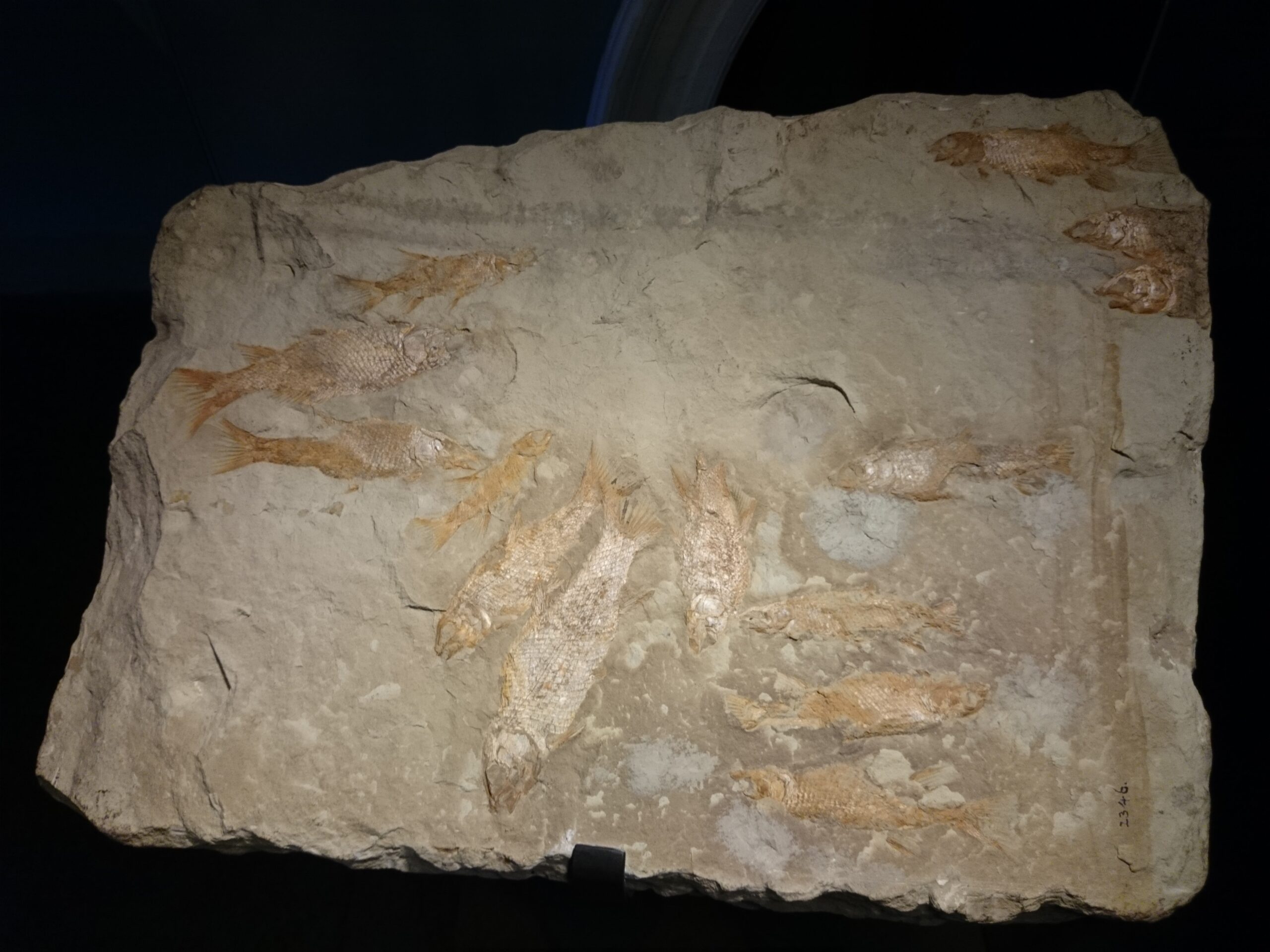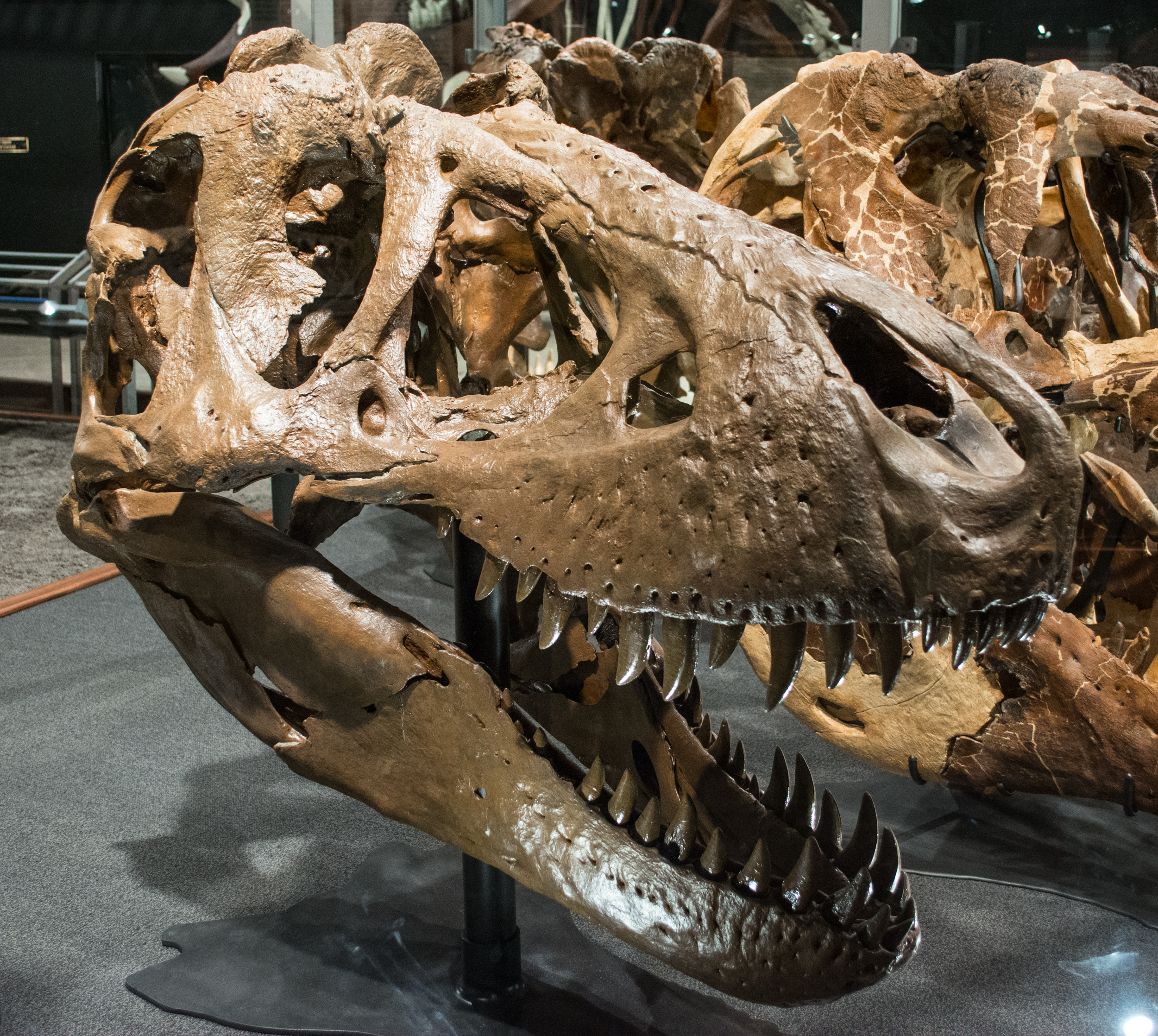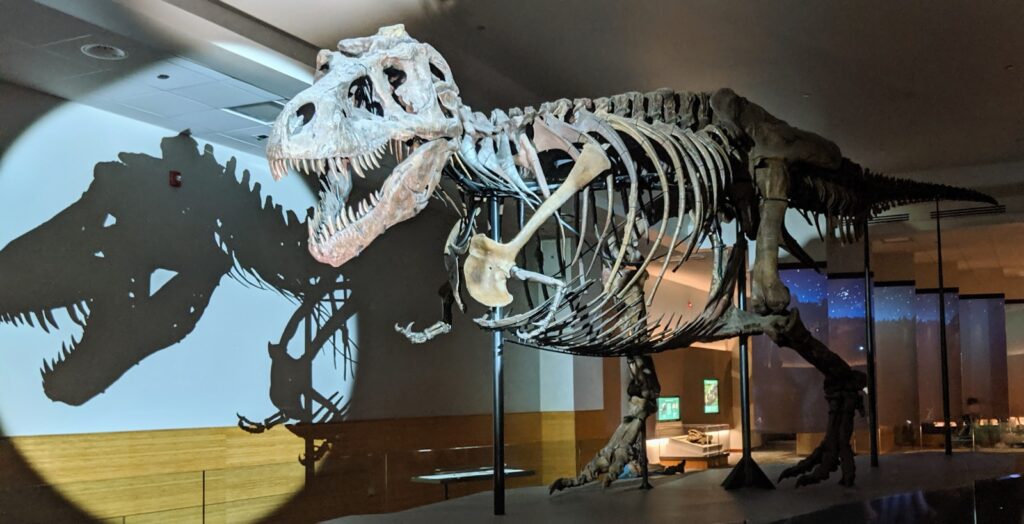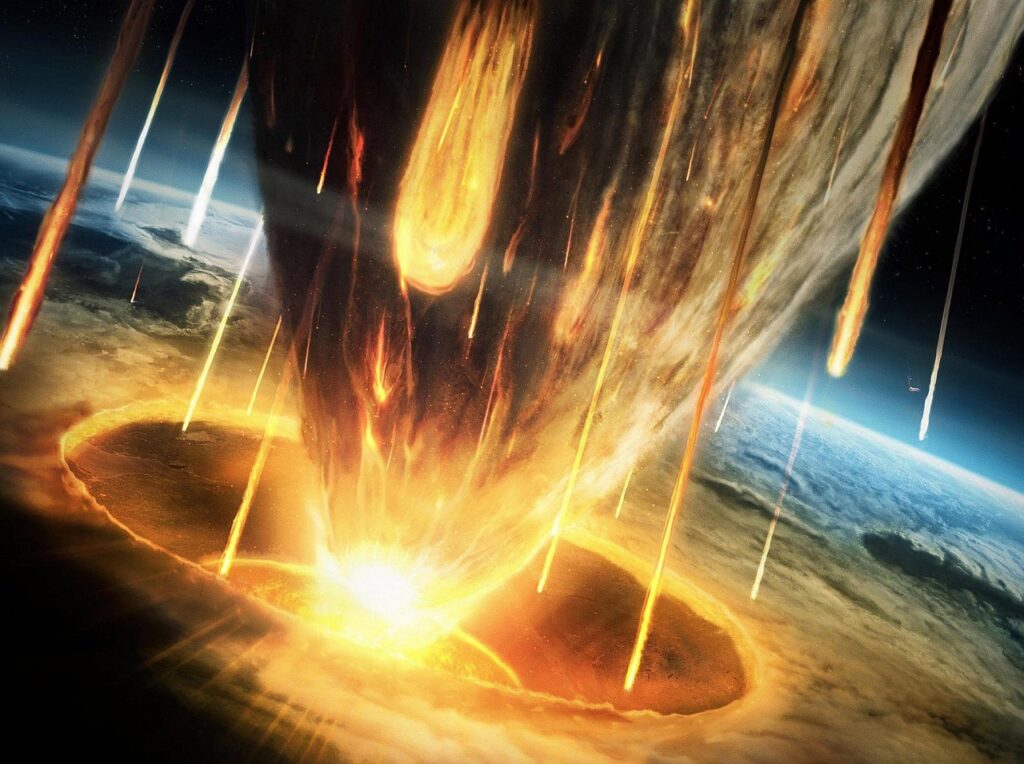Picture this: you’re standing in a museum, face to face with a towering T-Rex skeleton that lived 68 million years ago. The bones look so real, so preserved, that you almost expect the creature to suddenly spring to life. But here’s the mind-blowing truth—those aren’t actually bones at all. They’re stone replicas, mineral ghosts of what once was. The real bone tissue vanished eons ago, replaced atom by atom through one of nature’s most incredible magic tricks.
The Miracle of Turning Life Into Stone
Fossilization is essentially nature’s way of creating permanent sculptures from temporary life. When an organism dies, it usually decomposes completely within years or decades. But under very specific conditions, something extraordinary happens instead.
The process begins when an organism gets buried quickly after death, typically by sediment, volcanic ash, or other materials. This rapid burial is crucial because it protects the remains from scavengers, oxygen, and bacteria that would normally break down organic matter. Think of it like vacuum-sealing meat to prevent spoilage, except nature does it with mud and sand.
Over millions of years, minerals in groundwater slowly seep into the tiny spaces within bones, shells, or plant tissue. These minerals—often silica, calcium carbonate, or iron compounds—gradually replace the original organic material, creating a perfect stone replica. The result is a fossil that maintains the exact shape and structure of the original organism, but is now made entirely of rock.
Why Most Creatures Never Become Fossils

Here’s a sobering reality: less than 1% of all organisms that have ever lived became fossils. The conditions required for fossilization are so specific and rare that most life forms simply vanish without a trace. It’s like trying to win the lottery while being struck by lightning—during a solar eclipse.
Soft-bodied creatures like jellyfish, worms, and most insects have virtually no chance of fossilization because they lack hard parts that can be preserved. Even organisms with bones or shells face overwhelming odds. They need to die in just the right place, at just the right time, with just the right burial conditions.
Marine environments offer the best chances for fossilization because sediment accumulates quickly on ocean floors. Land animals face much tougher odds—they’re more likely to be scavenged, weathered, or destroyed before burial can occur. This is why we have far more fossils of sea creatures than land animals from most time periods.
The Race Against Time and Decay
From the moment an organism dies, it’s in a race against decomposition. Bacteria immediately begin breaking down tissues, starting with the softest parts first. Within hours, the process of decay is well underway, and within days or weeks, most soft tissues are completely gone.
Temperature plays a crucial role in this biological countdown. In hot, humid conditions, decomposition accelerates dramatically. A carcass that might last months in a cold, dry environment could be reduced to bones in just days in a tropical setting. This is why fossils from hot climates are often less complete than those from cooler regions.
Oxygen is another enemy of preservation. Aerobic bacteria—those that need oxygen to survive—are incredibly efficient at breaking down organic matter. The best preservation occurs in oxygen-poor environments like deep ocean floors, swamps, or areas with rapid sediment burial that cuts off oxygen supply.
Different Types of Fossilization Processes
Not all fossils form the same way. Petrification, the stone-replacement process most people think of, is just one method. Carbonization occurs when organic material is compressed over time, leaving behind a thin carbon film—think of the beautiful leaf impressions you see in shale.
Mold and cast fossils form when an organism dissolves away completely, leaving behind a hollow space (mold) in the rock. Sometimes this space gets filled with minerals later, creating a cast. It’s like nature’s own sculpture-making process, where the original organism serves as a temporary mold.
Amber preservation is perhaps the most spectacular type of fossilization. When tree resin traps small organisms like insects, the resin can harden into amber over millions of years. These fossils preserve incredible detail, including fine hairs, wing patterns, and even the contents of insects’ stomachs.
The Fragile Nature of Organic Molecules
DNA, proteins, and other organic molecules are remarkably fragile compared to the minerals that replace them during fossilization. These complex molecules are held together by relatively weak chemical bonds that break down rapidly after death. Think of them as delicate paper chains that disintegrate when exposed to water, heat, or time.
Even under ideal preservation conditions, organic molecules face constant attack from environmental factors. Water molecules can break chemical bonds through hydrolysis, while heat accelerates the breakdown of complex organic structures. Radiation from natural sources also damages organic molecules over time.
The larger and more complex a molecule, the more vulnerable it becomes to degradation. DNA, with its intricate double-helix structure and thousands of base pairs, is particularly susceptible to damage. Proteins, while somewhat more stable, still break down relatively quickly on geological timescales.
Why DNA Has Such a Short Shelf Life
DNA’s worst enemy isn’t dramatic destruction—it’s the slow, inevitable process of chemical breakdown. Scientists estimate that DNA has a half-life of about 521 years under ideal conditions. This means that after 521 years, half of the DNA bonds in a sample will have broken down, and after another 521 years, half of what remains will be gone.
Water is particularly destructive to DNA because it can slip between the base pairs and break the hydrogen bonds that hold the double helix together. Even in frozen conditions, liquid water can exist in microscopic pockets within tissues, slowly but steadily degrading genetic material.
Temperature dramatically affects DNA survival. For every 10-degree Celsius increase in temperature, the rate of DNA degradation roughly doubles. This is why genetic material from tropical environments is virtually impossible to recover, while DNA from arctic conditions might survive for tens of thousands of years. The coldest environments on Earth act like natural freezers, dramatically slowing down the chemical reactions that destroy DNA.
The Oldest DNA Ever Recovered
The current record for the oldest DNA ever extracted belongs to mammoth specimens from Siberian permafrost, dating back over one million years. These samples were found in permanently frozen ground where temperatures remained below freezing for the entire preservation period. The DNA was highly fragmented and degraded, but enough remained to provide valuable genetic information.
Before this discovery, most scientists believed that DNA couldn’t survive beyond 100,000 years under any circumstances. The Siberian mammoth DNA pushed that boundary back by a factor of ten, showing that under absolutely perfect conditions—constant freezing temperatures, no water movement, and protection from radiation—genetic material can survive much longer than previously thought.
However, even this ancient DNA was severely damaged, existing only in tiny fragments rather than complete genes. Reconstructing meaningful genetic information from such degraded material requires sophisticated laboratory techniques and enormous amounts of computational power to piece together the genetic puzzle.
Exceptional Preservation in Extreme Environments
Some of the most remarkable fossil preservation occurs in environments that seem hostile to life but are actually perfect for preservation. Deep ocean trenches, for instance, combine low temperatures, high pressure, and minimal oxygen to create natural time capsules. The famous Burgess Shale fossils from Canada preserve soft tissues in extraordinary detail because they were buried in oxygen-free conditions.
Volcanic environments can also create exceptional preservation through rapid burial in ash. The citizens of Pompeii weren’t technically fossilized, but volcanic ash created detailed molds of their bodies, preserving their final moments in stone. Similar processes have preserved ancient forests, insects, and even dinosaur skin impressions.
Salt deposits create another type of preservation environment. The extremely high salt concentration prevents bacterial growth, while the dry conditions inhibit most chemical reactions. Some salt mines contain preserved organic material that’s thousands of years old, though DNA rarely survives even in these conditions.
The Protein Preservation Paradox
While DNA rarely survives fossilization, proteins occasionally do—and this has revolutionized our understanding of ancient life. Proteins are generally more stable than DNA because they’re built from amino acids linked by stronger chemical bonds. Some proteins can survive for millions of years under the right conditions.
Collagen, the protein that gives structure to bones and connective tissue, is particularly hardy. Scientists have recovered collagen fragments from dinosaur fossils over 60 million years old, though this finding remains controversial in the scientific community. The preservation of ancient proteins opens new windows into understanding extinct species’ biology and evolution.
Protein preservation requires different conditions than DNA preservation. While DNA needs extremely cold, dry conditions, proteins can sometimes survive in warmer environments if they’re protected from water and oxygen. This means that protein analysis might be possible for fossils where DNA extraction would be hopeless.
Modern Techniques for Extracting Ancient Biomolecules
Today’s scientists use incredibly sophisticated techniques to extract and analyze ancient biomolecules. Clean rooms that rival those used in semiconductor manufacturing prevent contamination from modern DNA or proteins. Every surface is sterilized, and researchers wear full protective suits to avoid introducing their own genetic material.
Polymerase chain reaction (PCR) technology can amplify tiny amounts of ancient DNA, making it possible to analyze samples that contain only a few dozen intact molecules. However, this same sensitivity makes ancient DNA research extremely vulnerable to contamination. A single skin cell from a researcher can overwhelm an ancient DNA sample with modern genetic material.
Mass spectrometry allows scientists to identify individual amino acids and protein fragments from ancient samples. This technique can reveal information about ancient diets, diseases, and even evolutionary relationships between species. The technology is so sensitive that it can detect protein signatures from fossils that show no obvious signs of organic preservation.
The Role of Minerals in Fossil Formation
Different minerals create different types of fossils with varying levels of detail preservation. Silica-based minerals like quartz and opal can preserve incredible fine details, sometimes down to the cellular level. These minerals form from groundwater that’s rich in dissolved silica, often in volcanic regions.
Calcium carbonate, the same mineral that makes up limestone and seashells, is responsible for many marine fossils. This mineral readily precipitates from seawater and can quickly entomb organisms in calcium-rich environments. The famous Solnhofen limestone in Germany, where the first Archaeopteryx was found, formed in a calm lagoon where calcium carbonate settled gently onto deceased organisms.
Iron-based minerals can create some of the most spectacular fossil preservation. Pyrite, or “fool’s gold,” sometimes replaces organic material completely while maintaining perfect structural detail. These pyrite fossils gleam like metal sculptures but show every detail of the original organism’s anatomy.
Why Jurassic Park Remains Science Fiction

The beloved movie Jurassic Park popularized the idea of extracting dinosaur DNA from blood-sucking insects preserved in amber. While this makes for compelling cinema, it’s scientifically impossible for several reasons. First, no amber deposits from the Mesozoic Era (when dinosaurs lived) contain blood-sucking insects with intact digestive systems.
Even if such insects existed, the DNA would have degraded long ago. The oldest amber deposits are over 300 million years old, but DNA breaks down completely within about 6.8 million years under even the most ideal conditions. Dinosaur DNA from 65+ million years ago simply cannot exist in any recoverable form.
Additionally, extracting complete genomes from ancient DNA samples is virtually impossible. Ancient DNA exists only in tiny fragments, often just a few dozen base pairs long. Reconstructing a complete genome from such fragments would be like trying to reconstruct a novel from confetti—theoretically possible but practically impossible with current technology.
The Future of Ancient DNA Research
Despite the limitations, ancient DNA research continues to push boundaries and reveal secrets about our planet’s past. New techniques are being developed to extract and analyze increasingly degraded genetic material. Scientists are learning to work with shorter and shorter DNA fragments, gradually extending the time horizon for genetic analysis.
Artificial intelligence and machine learning are revolutionizing how scientists piece together ancient genetic puzzles. These tools can identify patterns in degraded DNA that humans might miss and help reconstruct partial genomes from fragmented samples. The combination of improving extraction techniques and computational power is opening new possibilities for understanding ancient life.
Perhaps most exciting is the potential for discovering new preservation environments. As we explore more extreme environments on Earth—from deep ocean trenches to Antarctic ice—we may find conditions that preserve biological material far longer than previously thought possible. Each new discovery expands our understanding of what’s possible in the realm of ancient biomolecule preservation.
Conclusion
The journey from living organism to fossil is one of the most remarkable transformations in nature. While fossilization can preserve the shapes and structures of ancient life for hundreds of millions of years, the delicate organic molecules that once animated these creatures are far more fragile. DNA, proteins, and other biological compounds face an uphill battle against time, temperature, and chemistry—a battle they almost always lose.
Understanding why DNA rarely survives fossilization helps us appreciate both the incredible fossils we do have and the technological marvels that allow us to extract genetic information from relatively recent specimens. Every fragment of ancient DNA recovered is a victory against the relentless forces of molecular decay, offering precious glimpses into the genetic heritage of our planet’s past inhabitants.
The next time you see a fossil, remember that you’re looking at a stone sculpture created by millions of years of patient mineral replacement. The original organism may be long gone at the molecular level, but its form lives on in rock, telling stories of ancient worlds and vanished ecosystems. What secrets might the next fossil discovery reveal about life on Earth?




